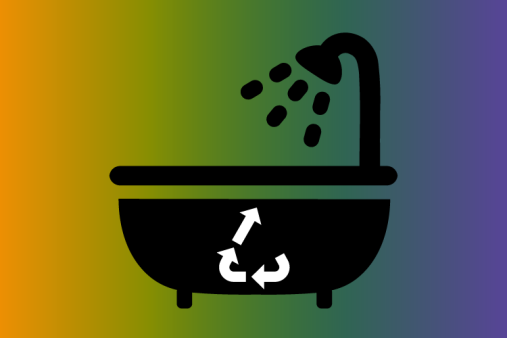Eco Kitchens – Everything You Need to Know (2025 Update)
Eco kitchens are no longer a niche trend—they’re fast becoming the standard for UK homeowners who want stylish, long-lasting kitchens that are better for the planet. With rising energy costs, growing awareness of climate change, and increased availability of sustainable materials, creating an eco-friendly kitchen has never been easier or more accessible.
Whether you’re planning a full renovation or making small sustainable upgrades, this comprehensive guide covers everything you need to know about eco kitchens in 2025.
What Is an Eco Kitchen?
An eco kitchen is a kitchen designed, built, and maintained with sustainability at its core. Rather than just adding recycling bins or opting for LED lighting, an eco kitchen considers the entire lifecycle of every element—where materials come from, how they’re manufactured, how efficiently they operate, and what happens at the end of their life.
An eco kitchen focuses on:
-
Sustainable materials (recycled, reclaimed, renewable, or responsibly sourced)
-
Energy efficiency (low-energy appliances, lighting, and heating)
-
Water conservation (efficient taps, dishwashers, waste systems)
-
Low-toxicity products (low-VOC paints, adhesives, finishes)
-
Carbon footprint reduction (local sourcing, long-lasting materials)
-
Waste minimisation (reuse, recycling, circular design)
The goal is simple: create a functional, stylish kitchen that performs well and minimises environmental impact over time.
What Might an Eco Kitchen Contain?
Eco kitchens vary widely depending on budget and priorities, but these are the most common components found in a modern sustainable kitchen:
1. Recycled or Sustainable Materials
Popular options include:
-
Reclaimed timber
-
Bamboo (fast-growing, renewable)
-
FSC-certified wood
-
Recycled glass worktops
-
Recycled plastic surfaces
-
Stainless steel (fully recyclable and durable)
-
Composite surfaces made from waste materials like paper, terrazzo, or eco-resins
Many UK companies now offer cabinetry and worktops made entirely from recycled or reclaimed materials.
2. Low-VOC Paints, Adhesives & Finishes
Traditional paints and finishes often emit toxic chemicals (VOCs). Eco kitchens use:
-
Water-based paints
-
Natural oils and waxes
-
Low/zero-VOC finishes
These improve indoor air quality and reduce environmental harm.
3. Energy-Efficient Appliances
Look for appliances with the best energy rating (A and above in the UK’s updated energy label system). This includes:
-
Fridges & freezers
-
Dishwashers
-
Ovens & hobs
-
Washer-dryers (if located in the kitchen)
Induction hobs, heat-pump dryers, and energy-efficient fridge-freezers are increasingly popular in eco-conscious homes.
4. Water-Saving Fixtures
Examples include:
-
Aerated taps that maintain pressure while reducing flow
-
Water-efficient dishwashers
-
Boiling water taps (which can reduce kettle use)
5. LED & Smart Lighting
LED bulbs use up to 90% less energy than incandescent bulbs. Smart lighting can further reduce waste by automatically adjusting brightness.
6. Integrated Recycling & Composting Systems
Eco kitchens often include:
-
Pull-out recycling stations
-
Food caddies for composting
-
Built-in storage for separating waste streams
7. Local Craftsmanship & UK Manufacturing
Buying locally reduces carbon emissions from transport and supports sustainable business practices.
8. Long-Lasting Construction
Durability is a sustainability feature. A kitchen designed to last 20+ years is far greener than one that needs replacing every decade.
Origins of the Eco Kitchen
The idea of a sustainable kitchen began gaining traction in the early 2000s, initially driven by concerns about deforestation and chemical exposure. Early eco kitchens relied heavily on reclaimed wood and natural finishes.
As environmental awareness grew—and new materials and technologies emerged—eco kitchens expanded to include:
-
Recycled materials and sustainable composites
-
Smart energy-efficient appliances
-
Carbon-neutral manufacturing
-
Closed-loop product systems that repurpose offcuts or use waste streams
Today, eco kitchens combine functionality, style, and sustainability with materials and technology that would have been impossible 20 years ago.
The Rise in Popularity (Key Stats)
Interest in eco kitchens has soared across the UK. Recent data shows:
-
60%+ of UK homeowners are planning eco-friendly home improvements (UKGBC, 2023).
-
43% consider energy efficiency a top priority in kitchen renovations.
-
Google searches for "sustainable kitchen design" rose 78% between 2021–2024.
-
Searches for "eco-friendly kitchen appliances" increased 62% in the same period.
Retailers and manufacturers are responding with sustainable product ranges from brands like:
-
Howdens (FSC-certified cabinetry)
-
Magnet (sustainability-led collections)
-
IKEA (recycled materials, circular design)
Smaller UK-based eco-kitchen specialists are also flourishing, offering bespoke solutions made from reclaimed and recycled materials.
How Much Does an Eco Kitchen Cost?
Costs vary widely depending on size, materials, and specification. Here’s a general guide for 2025:
Entry-Level Eco Kitchens (£5,000–£8,000)
-
Flat-pack cabinets using recycled or FSC-certified materials
-
A-rated appliances
-
LED lighting
-
Low-VOC paints
Mid-Range Eco Kitchens (£8,000–£15,000)
-
Custom cabinetry
-
Sustainable worktops (bamboo, recycled glass, eco composites)
-
A/A+ rated appliances
-
Integrated recycling stations
High-End Eco Kitchens (£15,000–£30,000+)
-
Bespoke handcrafted kitchens using reclaimed or locally sourced materials
-
Carbon-neutral manufacturing
-
Zero-VOC finishes
-
Ultra-efficient appliances
-
Smart tech for energy and water optimisation
Do Eco Kitchens Save Money Long-Term?
Yes—eco kitchens often result in:
-
Lower energy bills
-
Reduced water usage
-
Less frequent replacements due to durable materials
They can also increase property value, as sustainable homes are becoming more desirable to buyers.
Government Schemes & Grants (2025)
There are no grants specifically for eco kitchens, but homeowners may benefit from broader schemes that support energy efficiency:
ECO4 Scheme
Supports insulation, heating upgrades, and energy-saving improvements. While not kitchen-specific, these upgrades can complement eco kitchen redesigns.
Local Authority Grants
Some councils offer incentives for:
-
Energy-saving appliances
-
Water efficiency upgrades
-
Low-carbon home improvements
Always check local government resources or the Simple Energy Advice website for the latest funding options.
Top Tips for Planning Your Eco Kitchen
-
Start with your priorities – materials, energy use, carbon footprint, or ethical sourcing.
-
Reuse where possible – refurbish existing units or upcycle worktops.
-
Choose UK-made products – lowers transport emissions and supports local businesses.
-
Go for longevity – high-quality durable materials reduce future waste.
-
Check certifications – look for FSC, energy labels, B Corp, Cradle-to-Cradle.
-
Consider ventilation improvements – eco kitchens perform best with proper air quality management.
-
Think about circularity – choose suppliers who offer take-back or recycling programmes.
Final Thoughts
Eco kitchens aren’t just a passing trend—they reflect a broader shift toward conscious, sustainable living in the UK. With new materials, cutting-edge technology, and growing demand, it’s easier than ever to create a kitchen that’s stylish, functional, and environmentally responsible.
Whether you're making small updates or planning a full redesign, every eco-friendly choice reduces your home’s environmental impact.
And best of all? You don’t have to sacrifice aesthetics. Today’s eco kitchens offer some of the most beautiful and innovative designs available, proving that sustainability and style go hand in hand.




